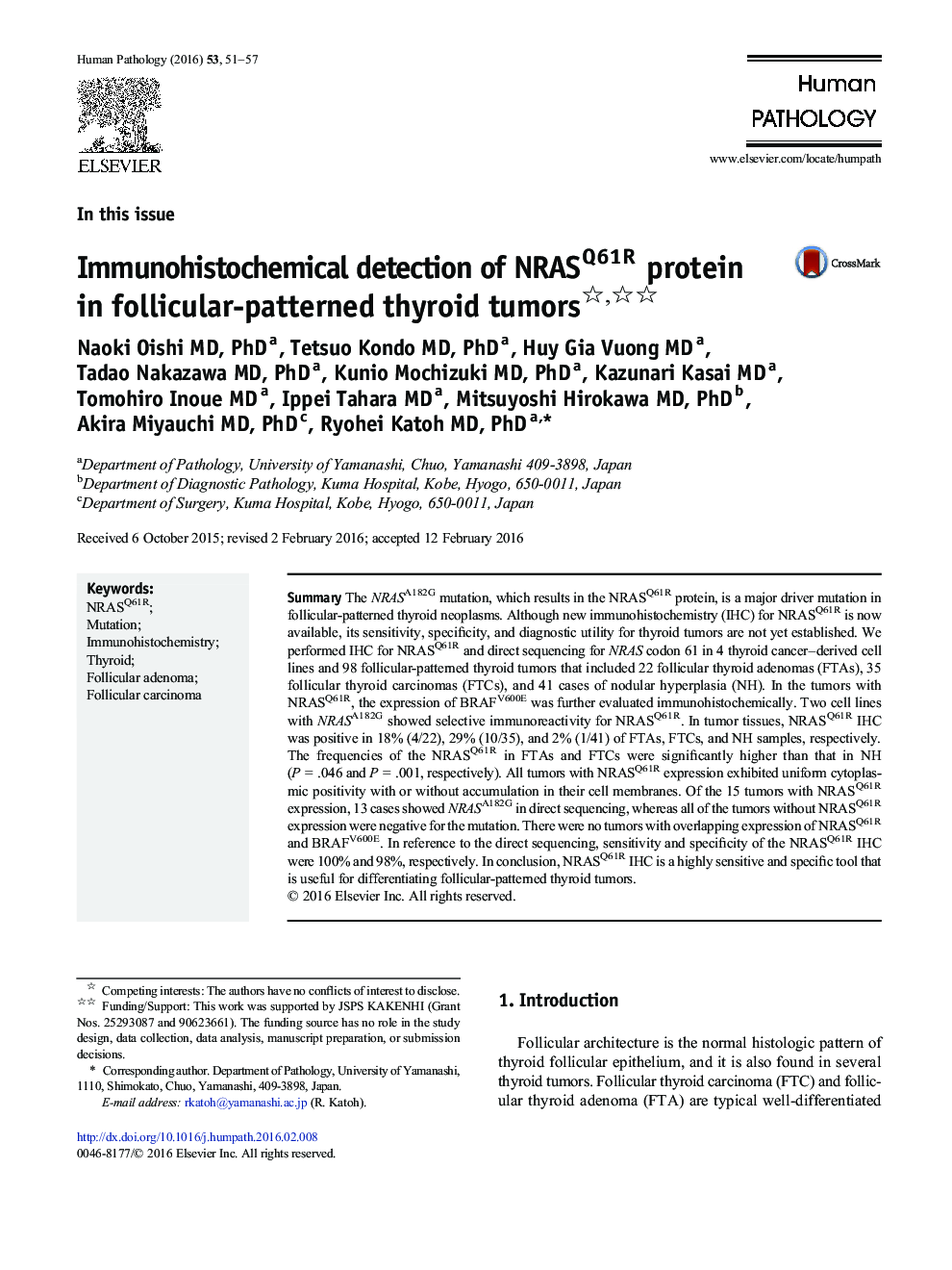| Article ID | Journal | Published Year | Pages | File Type |
|---|---|---|---|---|
| 4132362 | Human Pathology | 2016 | 7 Pages |
SummaryThe NRASA182G mutation, which results in the NRASQ61R protein, is a major driver mutation in follicular-patterned thyroid neoplasms. Although new immunohistochemistry (IHC) for NRASQ61R is now available, its sensitivity, specificity, and diagnostic utility for thyroid tumors are not yet established. We performed IHC for NRASQ61R and direct sequencing for NRAS codon 61 in 4 thyroid cancer–derived cell lines and 98 follicular-patterned thyroid tumors that included 22 follicular thyroid adenomas (FTAs), 35 follicular thyroid carcinomas (FTCs), and 41 cases of nodular hyperplasia (NH). In the tumors with NRASQ61R, the expression of BRAFV600E was further evaluated immunohistochemically. Two cell lines with NRASA182G showed selective immunoreactivity for NRASQ61R. In tumor tissues, NRASQ61R IHC was positive in 18% (4/22), 29% (10/35), and 2% (1/41) of FTAs, FTCs, and NH samples, respectively. The frequencies of the NRASQ61R in FTAs and FTCs were significantly higher than that in NH (P = .046 and P = .001, respectively). All tumors with NRASQ61R expression exhibited uniform cytoplasmic positivity with or without accumulation in their cell membranes. Of the 15 tumors with NRASQ61R expression, 13 cases showed NRASA182G in direct sequencing, whereas all of the tumors without NRASQ61R expression were negative for the mutation. There were no tumors with overlapping expression of NRASQ61R and BRAFV600E. In reference to the direct sequencing, sensitivity and specificity of the NRASQ61R IHC were 100% and 98%, respectively. In conclusion, NRASQ61R IHC is a highly sensitive and specific tool that is useful for differentiating follicular-patterned thyroid tumors.
